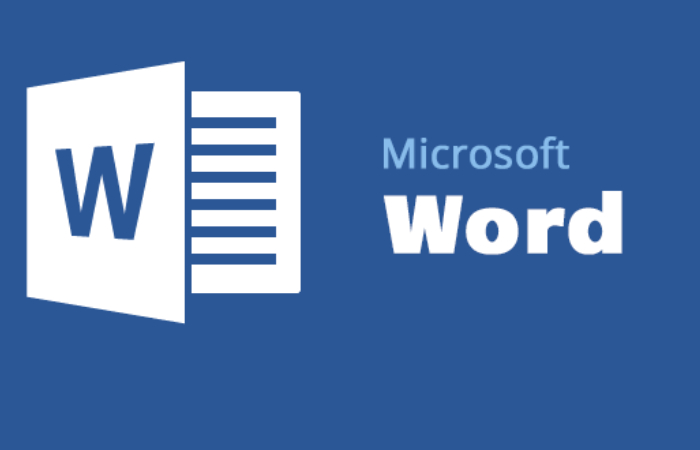Microsoft Word is one of the most common programs used in business today. Research shows that more than 1 million businesses worldwide use Office 365, which includes Microsoft Word, according to Statista.
Although Microsoft Word’s primary function is to write documents, the software also offers other business uses. It can help your business improve productivity, collaborate with team members, and secure personal information.
Term users can also access and edit their papers from anywhere. Before you start, you should understand how Microsoft Word works and how it can benefit your business.
What is Microsoft Word?
Microsoft Word is part of the more extensive Microsoft Office suite, including PowerPoint and Excel. Several versions include Home & Business, Home & Study, and Expert.
“Microsoft Word is the most popular and compatible word computer offered on all platforms,” said Colin Palfrey, Chief Marketing Officer at Crediful. “The files are forward and backward compatible across all devices, offering a universal normal for writers.”
What are the uses of Microsoft Word in business?

With Microsoft Word having so many features and capabilities, it is no surprise that people have started using it increasingly for their business transactions.
“Writing formal proposals and contracts is a big part of what I use MS Word for,” says Palfrey. “I also write emails in MS Word to ensure correct formatting, grammar, and syntax.”
Below are some specific ways to integrate Microsoft Word into your business processes.
1. Exchange of documents
Because the word processor is compatible with any platform or device, the papers you create in Microsoft Term can be standard with anyone, even persons who don’t have a subscription.
“A great feature for me is opening presentations I made on the Mac and viewing them on any device because all my devices can display the same file.”
2. Template parameters
Microsoft Word has thousands of built-in and downloadable templates that make it easy to get started on business documents such as letters, reports, and offers. Here are some of the most general MS Word templates for business purposes:
- Calendars
- Business letters
- Resumes and cover letters
- Newsletters
- Business reports
- Business offers
- Invoices
- Budgets
- Brochures and flyers
- Retirement announcements
- Certificates (for example, Employee of the Month)
- Letters of recommendation
- Marketing resources
- Employee reports
“MS Word has templates for creating all from conference minutes to product brochures,” says Dotcom Dollar founder Allan Borch.
3. Creation of an agreement
You can use Microsoft Terms to create your own contract or agreement patterns. Although the program doesn’t have a downloadable template for business contracts, you can find a template with an elegance you like elsewhere, copy and paste it into a new text, and add your information.
4. Teamwork
Using sharing options, you can send documents to colleagues so they can work on them. They can track their changes so everyone can see what they’ve added or deleted. Tracked changes also allow you to leave notes and questions in the margins that can be answered by anyone working on the document.
5. Mail merge
This feature allows you to create different documents that can be personalized for each recipient. This could be an email newsletter, an invitation to a meeting, or regular business correspondence.
In this case, a spreadsheet or list must be linked with the document so that Microsoft Word knows which names and addresses to put in the placeholders.
6. Branding tools
Microsoft Word also has branding tools that let you customize the appearance of your documents. Add your logo, select a color scheme, and other elements that match your brand.
You can also download an email signature template and create your email signature. You can also make a default email signature for everyone who works for your business.
What are other uses for Microsoft Word?

Microsoft Word can be used for business, entertainment, and general convenience. You can use this office software for tasks other than writing a letter, typing an essay, or composing a note.
1. Calendar
Microsoft Office includes calendar templates that you can customize. If you don’t want to use one of Microsoft’s calendars, you can create and customize your calendar in the software. By changing your document layout to landscape and placing a table seven pillars inclusive and five or six noises long, you can create a full-page monthly calendar to keep the way of your list.
To create a more miniature calendar, you can use portrait orientation and include the header at the top and the calendar portion at the bottom. You can add photos, watermarks, or other images to make your own before attaching it to the refrigerator.
2. Stationery or forms.
With a wide selection of Microsoft Office clip art, you can easily create private stationery or professional letterhead. First, select a full or partial frame to place on the page. Customize it by adding photos, watermarks, and different fonts to enhance the page. Word also contains ink and letterhead patterns you can use if you don’t need to create your own.
3. Postcards
Instead of paying for expensive cards while traveling, please wait until you get home and make them yourself using photos from your camera. Microsoft Word makes it easy to make 4 x 6 cards.
If you go to the Page Layout tab and resize your document to postcard size, you can start customizing it. You can also print the card onto a photo or cardstock to make it more durable when mailed.
4. Newsletters
You can easily create business newsletters with the multi-column feature in Microsoft Word. First, select portrait or landscape orientation. You can customize it the way you want.
You can add columns and draw a solid line between them for a more precise separation. Microsoft Office includes several ready-to-use newsletter templates you can use if you don’t want to create your own.
5. Flyers or invitations
Whether you need a flyer for an effort party or a birthday invitation, you can easily create it in Microsoft Word. To get creative, start with a blank document and create a flyer or invite from scratch. If you don’t think so, choose from various ready-to-use Microsoft Office flyers and invitation templates.
Whether you’re writing emails, writing proposals, or customizing one of the many patterns available in Microsoft Word, there’s no doubt about the value of the word processor for business purposes.
FAQ
How can businesses use Microsoft Word to create documents?
Microsoft Word creates professional documents, including business reports, proposals, contracts, invoices, and meeting minutes. It provides formatting tools, templates, and collaboration features that improve productivity.
Can Microsoft Word be used for collaboration and teamwork?
Microsoft Word allows you to collaborate in real-time through Microsoft 365 and OneDrive integration. Multiple users can edit a document, add comments, and track changes simultaneously for a more efficient workflow.
How does Microsoft Word help with branding and marketing?
Using Microsoft Word’s advanced design and formatting tools, businesses can create customized letterheads, brochures, newsletters, and business cards. Built-in templates and graphics help maintain brand consistency.
Is Microsoft Word valuable for automating repetitive tasks?
Yes, businesses can use macros and mail merge to automate tasks such as creating personalized letters, emails, and invoices, saving time and reducing errors.
Can Microsoft Word be integrated with other business tools?
Microsoft Word integrates seamlessly with Excel, PowerPoint, Outlook, and third-party applications to streamline document management, data analysis, and communications across all business operations.


